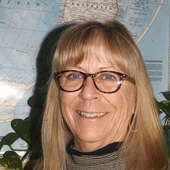Living in Red Willow County as a homesteader
Friday, October 16, 2020
One of the best parts of writing this little column is the people I get to meet and the stories I get to share with my readers. Bette Rice touched base with me about a pioneer story by Ethel Lawton Cole, Pete Rice’s grandmother, which was printed in the Palisade Times, September 24, 1937. Bette gave me a copy of the story to share.
“Among the wagons was one belonging to Leslie and Mary Lawton from Aurora, Illinois, who were enroute to Red Willow to live on a homestead which had be filed on a few months before. After a long tedious journey of about six weeks, they reached the homestead and began erecting a log house on what is now the Red Willow townsite. Indianola was their post office and they hauled their supplies from Plum Creek (Lexington), it taking several days to make the trip. Buffaloes and Indians roamed the plains as it was necessary for the women to stay alone, while the men made the trip, they lived in fear of their lives and my mother often wondered when she went to bed if she would get up in the morning with ‘her scalp on’.”
“One summer, 2300 Indians from the reservation camped across the creek from them and were very annoying to the settlers, begging and even wanting to trade squaws.”
“Planning to make this their home, the settlers started a day school and Sunday School and as there was no county organization, my father, a Mr. Hill and another man (name unknown to me) organized Red Willow County. The usual troubles over county seat location followed.”
“When the Fourth of July came, the ladies donned their best dresses brought from the east and proceeded to celebrate. Part of the dinner menu consisted of wild green grape pie and doughnuts fried in buffalo tallow.”
“One day my uncle (Geo. Rowley) came driving into our place. My mother noticed he had two squaws in the back of his wagon, upon inquiry he told her he had found them along the Republican River. One was wounded. They had escaped from the Sioux-Pawnee massacre over near what is now Trenton. He was taking them to Indianola in order that they could be sent back to the reservation. Later Mr. Rowley was killed by Indians north of Wauneta.”
“As my parents came to Red Willow to make a home, they plowed and planted, crops were fine, grasshoppers came in clouds that darkened the sun, descended, devoured everything and left. Then drouths and prairie fires followed and after several years of failure, my parents decided to go into the cattle business and they located at the mouth of the Bob Tail Canyon (Palisade) near where the Krotter feed lots now are located. Here they established a ranch which was the first one located in this section of the country. My father and two other men bought 1500 head of Texas steers on the trail, which was near Hamlet. These cattle were branded and turned loos to the far hills.”
“The flat where Palisade now stands was used for the round up grounds. At round up time the cowboys gathered all the cattle they could find and brought to the flat. The cattle men came, the cattle were sorted according to brands and some went back to Kansas, Colorado and north. When my father’s cattle were rounded up the next year after they were bought, only two were gone. Those that were to be shipped were driven to Naponee and shipped to Chicago.”
Ethel’s father, Leslie, sold his right to the ranch in the late 1880’s to Hugh Ashmore’s father but what a wonderful piece of SW Nebraska history is contained in her story. Thanks to Bette for sharing and the story will be available at the SWNGS library, 322 Norris Ave (The Temple Building), Rooms2-7. Open library hours are Tuesdays and Thursdays, 1-4 PM.

